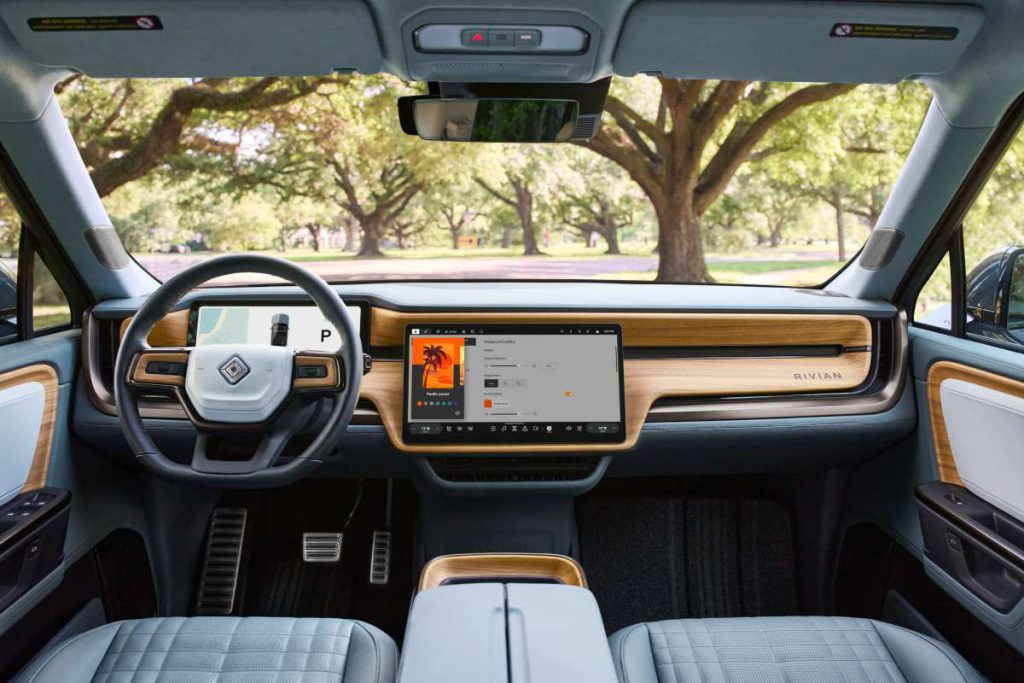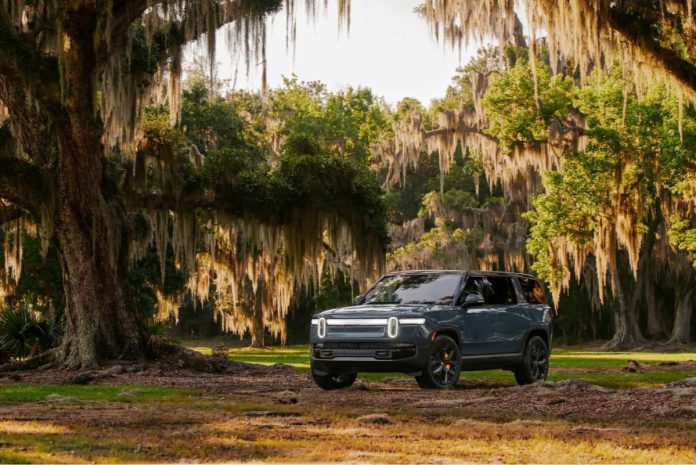In cars there are two basic approaches—the old school way where everything seems familiar and well-defined—or the new school approach that is full of fresh ideas and technology that might change the way you drive. This month’s test vehicle, the Rivian R1S electric 3-row SUV, straddles those two approaches.
That means it could either be a challenge or a comfortable ride, depending on your own perception of where the vehicle settles on the spectrum. Let’s dive a little deeper into how Rivian hits notes that might appeal to two different strata of big-wagon buyers.
The old school approach
If you can avoid the distinctive vertical ellipses that serve as the R1S’ headlights, the strictly upright look of the SUV is clearly derived from the classic auto industry approach to this segment—make it tall, maximize interior space by squaring things off and don’t worry about how many bugs will die as you cruise down the highway. Seating for seven and their gear is available. Like other traditional utility vehicles, the R1S is kin to a pickup truck, the R1T.
The R1S exhibits some traits associated with those old school trucks. Its ride is rougher than you might expect in a vehicle retailing (in our tester) more than $100,000. As you could reasonably expect for a car in that price range, it does have the touches of luxury found in other top-shelf SUVs—faux leather and real wood in the interior, an exceptional audio system, heated and ventilated seats and a slick paint job what can add $2,500 to the bottom line.
Finally, the most basic old school attribute is power. Our three-motor EV packs the equivalent of 850 horsepower, delivered instantly and capable of getting you to freeway speeds in about three seconds. As an all-wheel drive model, it can also apply that power to take you off-road to fairly challenging terrain, aided by favorable approach and departure angles—although its 121-inch wheelbase will keep it off narrow or curvy trails.

The new tech path
As traditional as its basic looks are, climb inside the R1S and you’re quickly transported to the 21st century. Two horizontal screens are the only gauges or controls available to you (other than some on the steering wheel). If you want to change the radio station or alter the temperature of the interior, it’s through the screens or voice commands.
This is a software-defined vehicle, so unlike the traditional sport utility vehicle, it can be updated via over-the-air downloads. Along with its sophisticated software, the R1S has a full complement of modern technology, capable of advanced driving assistance. Look up and you’ll see a panoramic glass roof not found on old-style SUVs. The software also delivers a plethora of different drive modes that will tailor your ride to whatever surface you encounter.
The other major new tech is the electric powertrain and all of its related equipment, including an aggressive regenerative braking system that helps deliver our R1S model’s exceptional 329-mile range. The software-driven system is efficient in spite of its massive power. It’s also capable of fast-charging to keep you rolling.
Summing it up
The Rivian R1S Tri Max we drive has a delivered price tag of $115,350—and it’s not the top-of-the-line model! The good news is the R1S Dual Standard starts at $76,990 and has 533 horsepower, 270 miles of range and the same interior space found on our pricey version. There are two battery grades that boost range between charges in the next model up—the R1S Dual, which can add more than 100 horsepower and up to 410 miles of range.
With the demise of the federal tax credit, Rivian and other automakers are creating new deals, so the relatively high prices shouldn’t keep you from checking out what is one of the defining three-row electric SUVs on the market, especially if you fit the “adventurer” profile the T1S skews toward.




